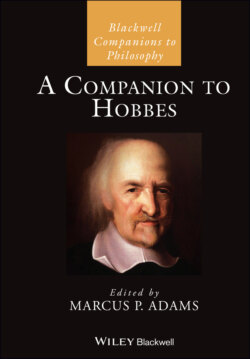Читать книгу A Companion to Hobbes - Группа авторов - Страница 35
2.1.3 The Cavendish Circle
ОглавлениеFinally, there was fertile Stoic soil in Hobbes’s closest intellectual community, the so-called Cavendish Circle, which comprised the prominent Cavendish brothers, William and Charles, Margaret (wife of William), Walter Charleton, Kenelm Digby, and others. Lipsius’ thought was a major inspiration for the Circle. But the philosophy of Margaret Cavendish is especially pertinent in relation to Hobbes. Although she was explicitly opposed to Hobbes’s mechanistic version of materialism, Cavendish’s own thought was distinctly Stoic in ways similar to Hobbes’s. In order to account for the immense diversity and activity in nature she found it necessary to demarcate self-moving “animate” from inert “inanimate” matter.8 Like Hobbes’s corporeal God, (as we will see below) her animate matter was thoroughly intermixed with inanimate matter and like Hobbes she tries to explain “how so fine, subtle and pure a part as the animate matter is can work upon so gross a part as the inanimate” (2001, 158).
She declined to deify animate matter, though she does say it is “a kind of God or Gods to the dull part of matter” (Cavendish 2001, xxi).9 Hobbes and Cavendish are at bottom kindred Stoic spirits, though their systems diverge on the precise nature of material activity.
